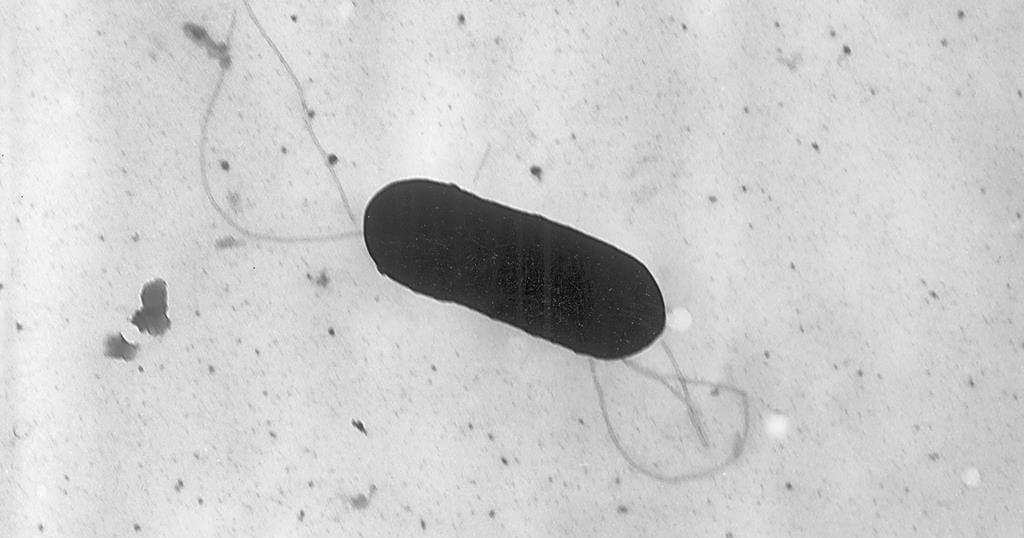TORONTO – Listeria can make people sick up to two months after they eat or drink contaminated products, which can pose a challenge in identifying the source of illness quickly, experts say.
Two people in Ontario died amid a listeriosis outbreak linked to a national recall of certain plant-based milks, the provincial health ministry confirmed Thursday. The ministry would not say where the patients were from.
As of Thursday, there were 12 lab-confirmed cases of listeriosis — the illness caused by the Listeria bacteria — linked to a national recall of several Silk and Great Value brand plant-based milk products.
“This is a tragic outcome of an outbreak,” said Dr. Isaac Bogoch, an infectious diseases specialist at Toronto General Hospital.
“We’ve got to jump on these outbreaks as quickly as possible to reduce the number of people that are infected and to reduce the morbidity and mortality.”
Lori Burrows, a microbiologist at McMaster University in Hamilton, said the long incubation period for listeriosis means that people who felt ill after drinking affected products may not know they were infected.
“I think that’s why it sort of continued under the radar until more and more people got sick and now they’ve started to be able to link the epidemiology of these cases together to trace it back to the source,” said Burrows, who is also the Canada Research Chair in microbe-surface interactions.
There are eight other reported cases in Ontario, one in Quebec and one in Nova Scotia, according to an updated notice from the Public Health Agency of Canada released Wednesday evening.
The recall was first issued by Silk manufacturer Danone and the Canadian Food Inspection Agency on July 8.
The illnesses reported so far happened between August 2023 and early July, the public health agency’s updated notice said, noting that “more recent illnesses may continue to be reported.”
The incubation period for listeriosis ranges from a few days to 60 days, Bogoch said, adding that the officially documented cases are “probably the tip of the iceberg” in terms of how many people have actually been infected.
The “vast majority” of people who get it will have mild to moderate gastrointestinal symptoms and many will get better on their own without medical attention — so those cases wouldn’t be reported, he said.
But certain vulnerable groups are at higher risk of “very severe infection,” he said. That includes people who are older, pregnant, immunocompromised and infants.
“People can have the bacteria in their bloodstream and it can cause a sepsis syndrome, and it also has a predilection to cause a meningitis or an encephalitis,” he said.
Ontario’s health ministry would not disclose how old the two people who died were. The Public Health Agency of Canada notice says those who were sickened were between 37 and 89 years old and more than half were 60 years of age and older.
Pregnant women are at particular risk even if their symptoms are mild because listeriosis can harm the fetus, the public health agency’s notice says.
Those risks include miscarriage, stillbirth, premature birth and life-threatening illness shortly after birth.
Danone has said the Listeria contamination happened on a specific line in a third-party manufacturing plant.
Preventing bacterial contamination can be challenging in a manufacturing facility, Burrows said.
“These sorts of outbreaks are typically related to processing errors, if you will, or incomplete cleaning,” she said.
“You can’t just put your slicer or your hoses in the dishwasher, right? You have to actually clean them where they are. And you can imagine there’s lots of complicated small pieces of those machines, and so bacteria can get into the nooks and crannies and can linger.”
Listeria forms “biofilm” — bacteria-laden slime that can stick to surfaces — so factory workers “have to clean things pretty aggressively,” Burrows said.
At the same time, factories need toensure the disinfectant they use doesn’t come in direct contact with the food or beverage, so they have to rinse with lots of water which could in turn be contaminated with Listeria, she said.
In a statement issued Wednesday evening, the president of Danone Canada called the news of the deaths “devastating.”
“We would like to reassure our consumers that we have conducted the recall and have removed the affected products from retail shelves, in close collaboration with our retail partners,” said Frédéric Guichard.
“We are working with the utmost seriousness and in close partnership with the authorities to thoroughly investigate and shed light on the circumstances surrounding this event.”
Symptoms of listeriosis include vomiting, nausea, persistent fever, muscle aches, severe headache or neck stiffness, the Public Health Agency of Canada says.
Bogoch said anyone with symptoms whothinks they consumed the affected products should seek medical attention.
Listeriosis is a straightforward infection to detect by taking specimens and growing microbiological cultures, he said.
It can be treated with ampicillin, a drug in the penicillin class of antibiotics.
Bogoch said people should also make sure they don’t have the affected products in their homes: “If in doubt, throw it out.”
The recalled products include Silk brand almond milk, coconut milk, almond-coconut milk and oat milk, as well as Great Value brand almond milk.
Most of the affected products have best-before dates up to and including Oct. 4.
This report by The Canadian Press was first published July 18, 2024.
Canadian Press health coverage receives support through a partnership with the Canadian Medical Association. CP is solely responsible for this content.

























